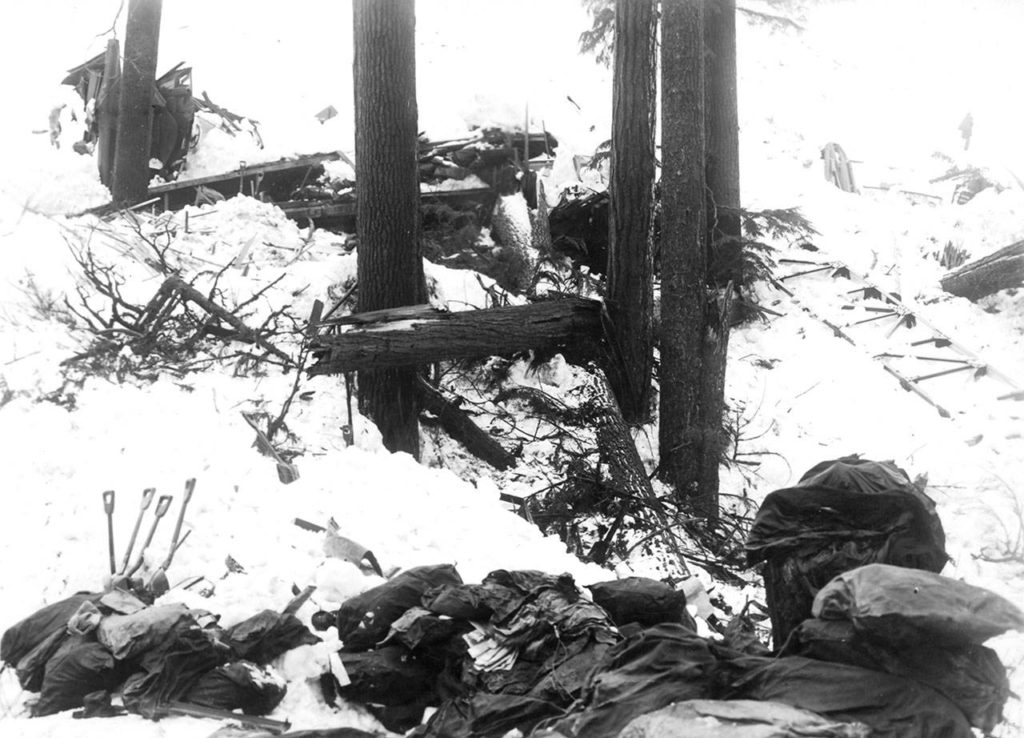Initial reports of the calamity proved far too optimistic.
“Dead may reach total of 30,” read a headline that stretched all the way across the front page of The Everett Daily Herald on the evening of Wednesday, March 2, 1910.
In the early hours of the previous day, a wall of snow a half-mile long and quarter-mile wide had swept down Windy Mountain near Stevens Pass in the Cascades taking with it two Great Northern trains that had been marooned on the tracks at Wellington for six days in blizzard conditions.
The avalanche shoved the trains, Spokane Local passenger train No. 25 and Fast Mail train No. 27, 150 feet down into the Tye River gorge and left bodies scattered across the mountain, some buried up to 40 feet deep in snow.
The first Herald reports listed the dead, the missing and the names, occupations and hometowns of survivors as well as their injuries.
“M. Saville, cook, Everett, bruised left shoulder, head and back; Mrs. Wm. Chemanias, B.C., housewife, cut on head and body bruised,: B. Tegtmeier, Everett, engineer, sprained hip, internal injuries…”
Another story told of one of the trains’ conductors, John K. Parzybock, who was killed. It described him as not only the person who for a long time was in charge of the rock train used to build the seawall between Seattle and Everett, but also as a great baseball enthusiast who frequently pitched in many northwest towns.
Recovery of bodies went on for weeks in grueling winter conditions and under threat of further avalanches. Among the dead were dozens of railroad employees who’d been asleep on the trains and in the depot. The last body was found at the end of July, nearly five months after the avalanche.
Many of those killed lived in Everett. Nine are buried there in Evergreen Cemetery.
In all, 96 people died. It remains the deadliest avalanche in U.S. history.
Talk to us
> Give us your news tips.
> Send us a letter to the editor.
> More Herald contact information.



























